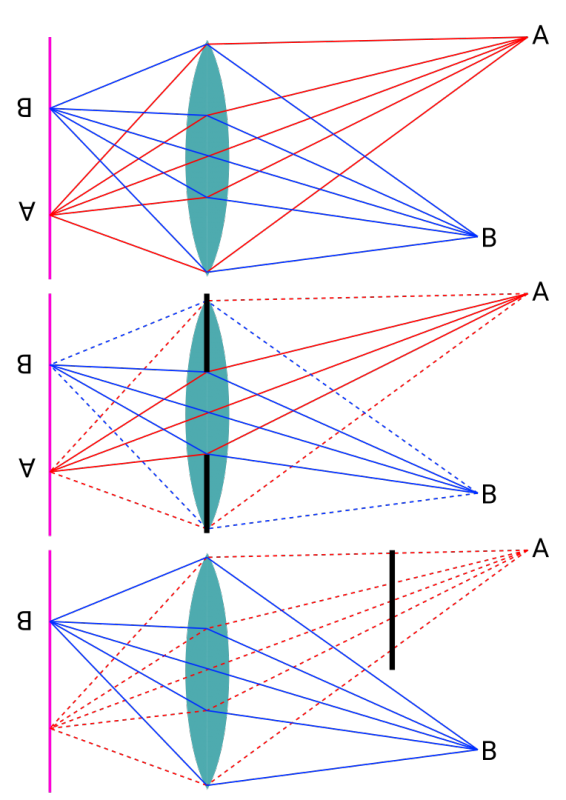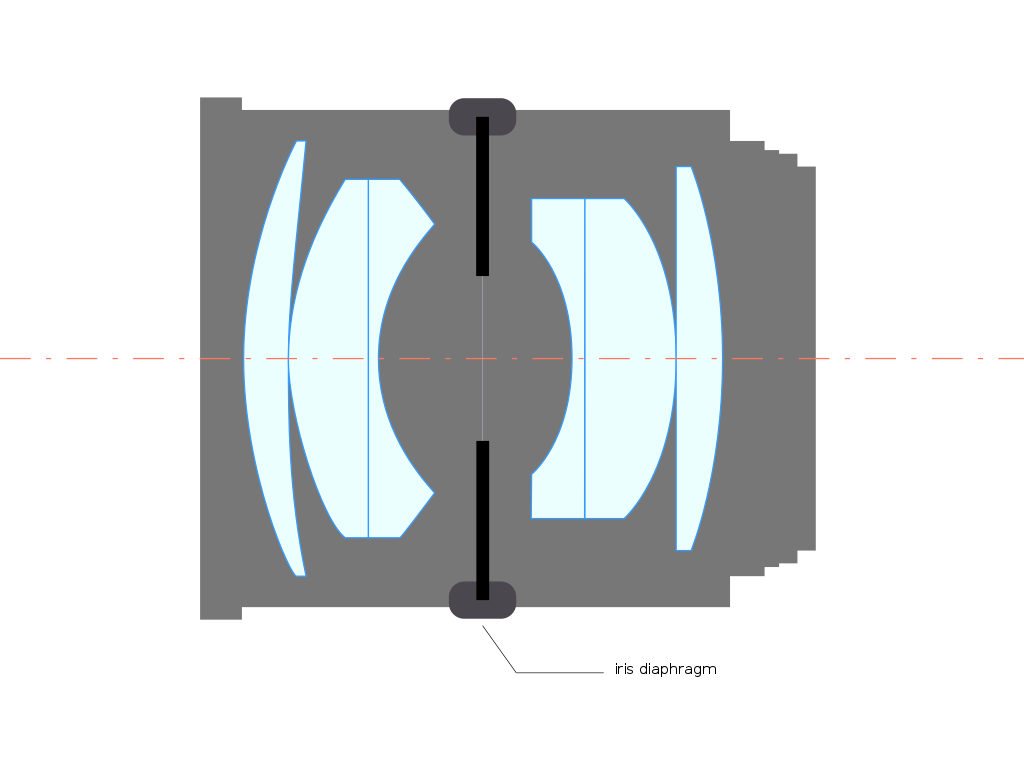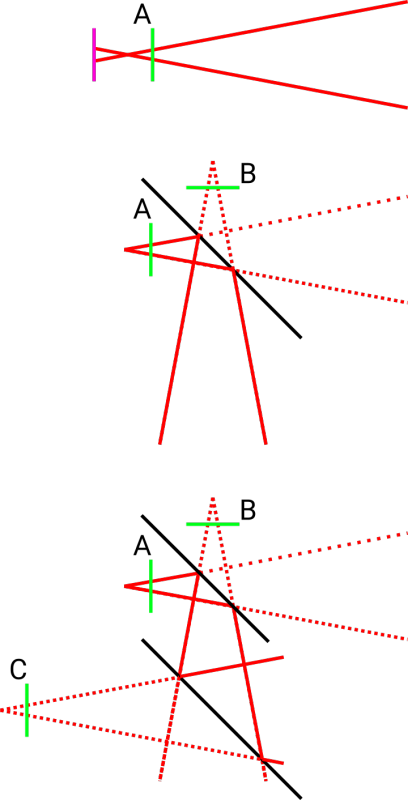Difference between revisions of "Mono-lens stereo beam splitter"
(→Aperture vs field diaphragm/mask) |
(→Aperture vs field diaphragm/mask) |
||
| Line 2: | Line 2: | ||
*TOP: all the light rays coming from one point though the lens, supposed point A, is sent to a single point of the picture (when focused). | *TOP: all the light rays coming from one point though the lens, supposed point A, is sent to a single point of the picture (when focused). | ||
| − | *MIDDLE: if you have a diaphragm/mask very very close to the lens (ideally inside the lens system, see the second picture), you are reducing the light rays, keeping the whole scene with less light. You have an aperture diaphragm/mask. | + | *MIDDLE: if you have a diaphragm/mask very very close to the lens (ideally inside the lens system, see the second picture), you are reducing the light rays, keeping the whole scene with less light. You have an '''aperture''' diaphragm/mask. |
| − | *BOTTOM: if your diaphragm/mask is far from the lens (according to its size), you simply hide all the light of a part of the scene (suppose you are hiding all the light from point A), keeping the light of the other part of the scene (suppose point B). You have a field diaphragm/mask. | + | *BOTTOM: if your diaphragm/mask is far from the lens (according to its size), you simply hide all the light of a part of the scene (suppose you are hiding all the light from point A), keeping the light of the other part of the scene (suppose point B). You have a '''field''' diaphragm/mask. |
To be able to do stereo shots, you need your mirrors to act like 2 complementary field masks, thus being not-to-close to the lens. | To be able to do stereo shots, you need your mirrors to act like 2 complementary field masks, thus being not-to-close to the lens. | ||
Revision as of 09:38, 16 April 2021
Aperture vs field diaphragm/mask
- TOP: all the light rays coming from one point though the lens, supposed point A, is sent to a single point of the picture (when focused).
- MIDDLE: if you have a diaphragm/mask very very close to the lens (ideally inside the lens system, see the second picture), you are reducing the light rays, keeping the whole scene with less light. You have an aperture diaphragm/mask.
- BOTTOM: if your diaphragm/mask is far from the lens (according to its size), you simply hide all the light of a part of the scene (suppose you are hiding all the light from point A), keeping the light of the other part of the scene (suppose point B). You have a field diaphragm/mask.
To be able to do stereo shots, you need your mirrors to act like 2 complementary field masks, thus being not-to-close to the lens.
Diaphragm included in a lens system:
Mirror system, one side
- TOP: without mirror, the pink line is your sensor, the green line A is your shot (what you see when holding the final picture in front of your eyes)
- MIDDLE: with one mirror, your shot is in fact mirrored as if it would be the virtual green line B
- BOTTOM: with two mirrors, your shot becomes the virtual green line C


